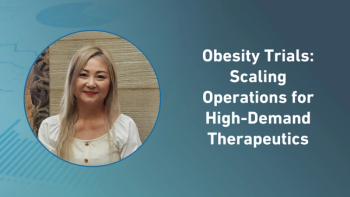
Social Media Helps Sponsors Manage Sites, Boost Enrollment
Innovative uses of social media and other new information technology has become increasingly important in improving clinical research operations and sponsor communications with sites, investigators and vendors.
Innovative uses of social media and other new information technology has become increasingly important in improving clinical research operations and sponsor communications with sites, investigators and vendors. A wealth of online services are emerging that aim to assist companies in identifying eligible patients for studies, as well as roadblocks to clinical trial success, according to experts at the October Clinical Trial Optimization conference organized by Cambridge Healthtech Institute.
A new study from the Tufts Center for the Study of Drug Development (CSDD), which should be unveiled early next year, aims to present industry best practices and challenges for incorporating social media communities into the clinical research enterprise. The project is reviewing initiatives by sponsors, CROs, and investigative sites for using social media to communicate company policies, support patient recruitment, improve pharmacovigilance and interact with patients and other parties involved with research programs, reported CSDD project manager Stella Stergiopoulos. Back in 2011, a Tufts benchmarking study on patient recruitment and retention practices revealed that sponsors don’t routinely assess the effectiveness of trial management strategies and that more robust measures are needed to better inform decision-making. Now many investigative sites are “jumping on the mobile apps bandwagon” to provide information on clinical trials and engage patients by sending out appointment reminders and other notices, Stergiopoulos noted. Pharma companies are using social media to engage patients upfront in defining enrollment inclusion/exclusion criteria and patient testing requirements that can be important in study recruitment and patient retention. The survey is timed to influence FDA development of guidance on pharma use of social media, particularly in research and drug development.
Social media can be particularly useful in linking sponsors with clinical sites, noted Chris Conklin, associate director of clinical research for global trial optimization at Merck. A pilot project with TrialNetworks uses a social networking platform to improve communications with site personnel and vendors. The program creates a study “community” by providing news on study progress and access to key documents. Timely information on accrual rates appears to generate competition among sites, and additional tools can help study coordinators with patient screening and managing participant visits and testing. The initiative has improved accrual and reduced site failure rates, and appears particularly valuable for dealing with sites outside the US, Conklin commented.
Intralinks is establishing a searchable “survey library” that allows research sites to identify studies they can best participate in, reported Kevin McNulty, director of life sciences product marketing. The program gets sites up and running quickly and can help sponsors track which sites deliver on promises for recruitment.
Sponsors also are developing systems to measure recruitment vendor performance. Shire Pharmaceuticals uses predictive indicators, such as cost-per-response and response-to-scheduled conversion rate, to ensure that recruitment expectations are clearly defined. The measurement process then can help assess a recruitment campaign and whether the company is using its recruitment budget effectively, explained Elizabeth Mascherino, associate director for clinical operations. Clear measures of acceptable performance also can allow for corrections in a recruitment campaign before it’s too late, Mascherino noted.
Newsletter
Stay current in clinical research with Applied Clinical Trials, providing expert insights, regulatory updates, and practical strategies for successful clinical trial design and execution.





.png)



.png)



.png)
.png)
